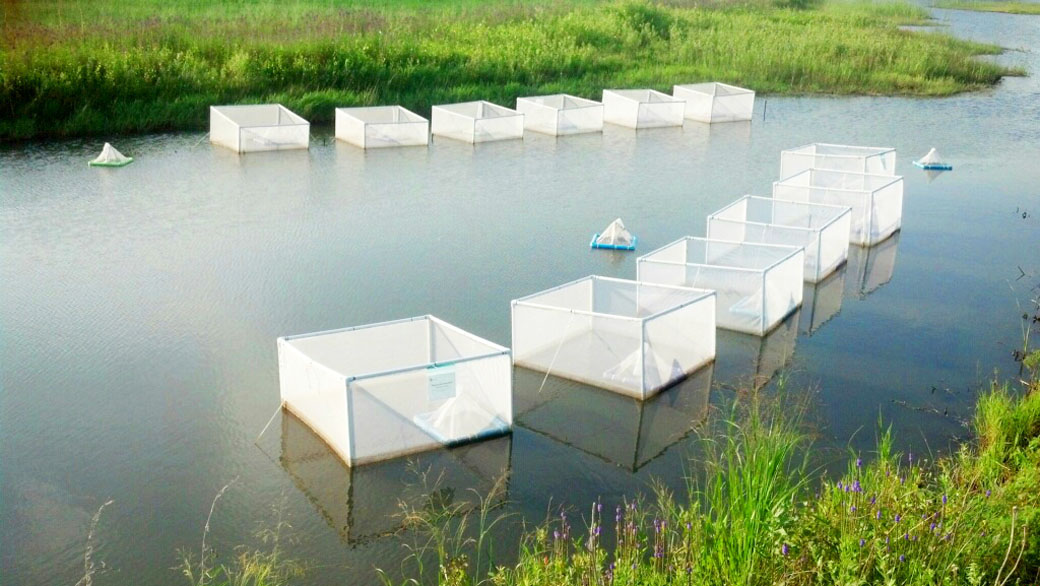
Animal research on campus executed without much resistance
Because animals can’t talk for themselves, the University of South Dakota animal research program must follow a strict protocol when they use them for testing, Robin Miskimins, associate dean for research for the Sanford School of Medicine said.
All research using animals is overseen by the Institutional Animal Care and Use Committee (IACUC). Some experiments can be short, and others, usually dealing with behavioral studies, last months.
Rats and mice are primarily what are used for testing at USD, but rabbits, turtles, hamsters, frogs, shrimp and insects have also been used, Miskimins said.
In order for an animal to be used for research, it must be healthy, happy and well-treated in order to yield the results principal investigators want, Miskimins said.
There is a staff that takes care of the animals everyday, and a veterinarian comes to check on the animals regularly.
Each experiment has to be approved by the IACUC, which makes sure the request is ethical, worth doing and will use the fewest number and lowest species possible, Miskimins said.
As chair of IACUC, Dr. William Percy takes part in reviewing every research proposal at USD. He said what many people don’t know, but should, is that animal research is heavily regulated at the state and federal level.
“A lot of people get their ideas about animal research from watching movies on television, and almost every depiction of research involving animals on television is illegal. The things that they’re doing would end up with the investigators going to jail,” Percy said. “That’s the discrepancy between the reality and the fiction. And unfortunately a lot of people blur that line.”
According to Miskimins, experimenting with a living system is often necessary to an experiment.
“We try to use as few of them as we can, but theres some things you just can’t test in a cell or a dish cause it’s not the same as being in your body,” Miskimins said.
Miskimins said she has encountered little to no negativity toward the USD research program.
“South Dakota understands. We raise animals for food in general in the state,” Miskimins said. “Whether you agree with it or not doesn’t matter, the fact is that is what gets done. And so they have a tolerant attitude about it.”
First-year Lesley Swart doesn’t know a lot about animal testing, but she’s not in favor of it.
“I love animals,” Swart said. “I don’t think it’s right.”
Swart is undecided on her major, but isn’t interested in any science fields or participating in animal research.
As long as just rodents are used for research, Swart isn’t as opposed to it.
“I can see where there’d be value,” Swart said.
First year Amber Hansen is also undecided on her major, but said she might be open to the animal research program.
“Depends on what the use is for and the way they go about it,” Hansen said.
Hansen said she believes animal research is only ethical when used to benefit humans, but not for cosmetic purposes.
Miskimins confirmed that no animal research is being done for the purpose of cosmetics at USD.
Biology professor Dr. David Swanson said research is a part of his job expectation. His focus is animal ecological physiology, which looks at how animals adapt to changes, like bird migration patterns or frogs’ and toads’ survival strategies in winter.
Both graduate and undergraduate students can be involved in the animal research program.
Because graduate students are required to complete a thesis and doctoral students are required to complete a dissertation, nearly all types of animal research are worked on by students in the biology department, Swanson said.
This semester, Swanson has five PhD students working with him. He said the department average is usually closer to two graduate students and two to three undergraduates.
Students become involved by approaching the professor to be a part of what they’re researching, Swanson said.
“They become interested in what you’re doing largely through reading your publications, your research and scientific journals,” Swanson said.
Percy said students who participate in animal research are typically in the health science program, the basic biomedical science graduate program, medical school and others.
While there are some experiments with a biomedical spin, Swanson said the biology department as a whole is not as disease-oriented as the medical school.
“A lot of us are interested in conservation aspects,” Swanson said. “Species conservation is something that drives quite a bit of research in the biology department.”
Each student who wants to work with animals must be trained and approved by the IACUC.
Because there are other research opportunities, Miskimins said no student is required to participate in experimenting with animals.
“Generally the students really like their experiences here. They generally get publications out of what they’re doing here which helps their careers,” Miskimins said. “It’s been really positive.”
Regardless of major, Miskimins said she encourages any student that has the opportunity to participate in research to do so.
“If you have the opportunity in your area of what interests you, I think it truly makes life-long learners if you start having that intellectual curiosity,” Miskimins said.
(An experiment measuring the effects of native and invasive fish on emerging aquatic insects is set up by MS student Jerry Warmbold. Submitted photo / The Volante)


